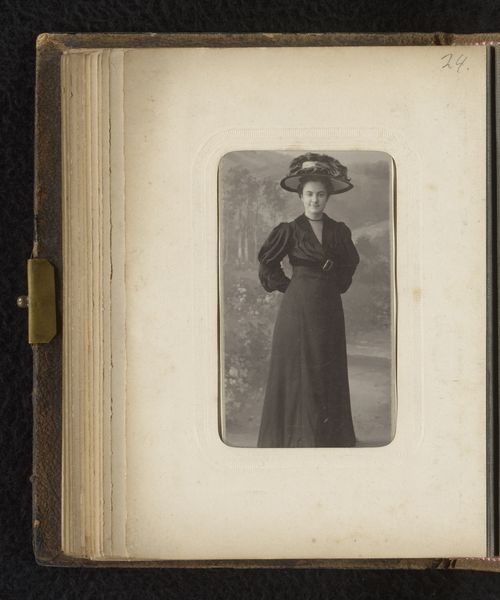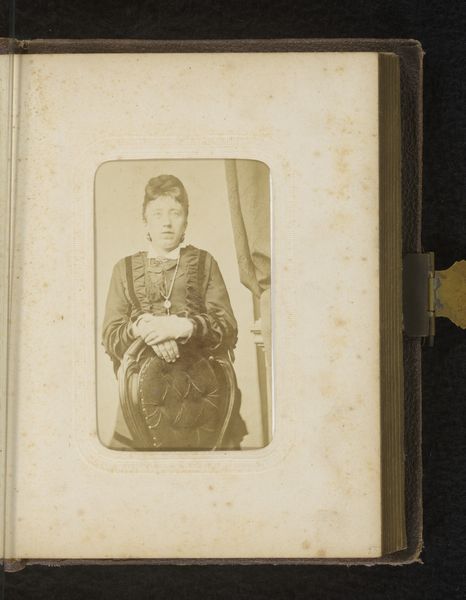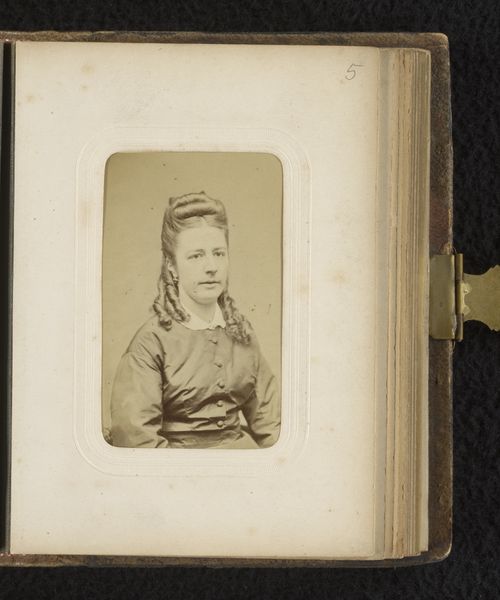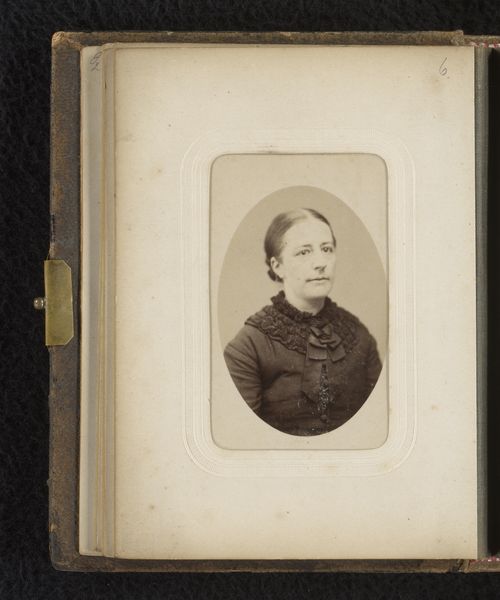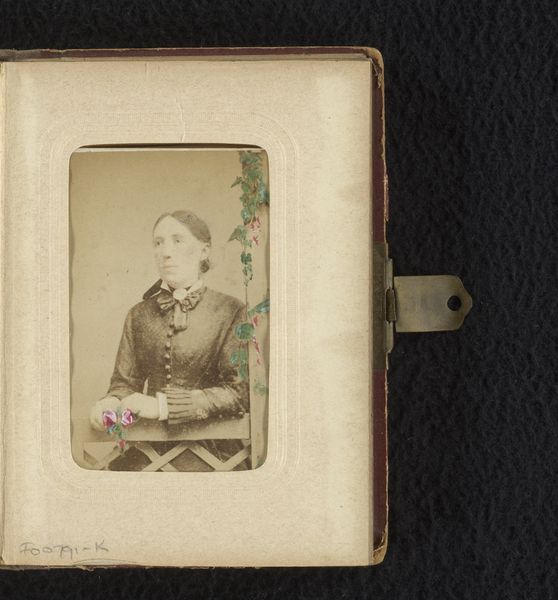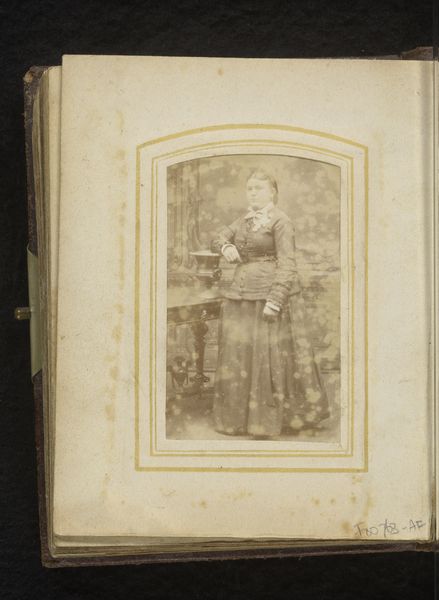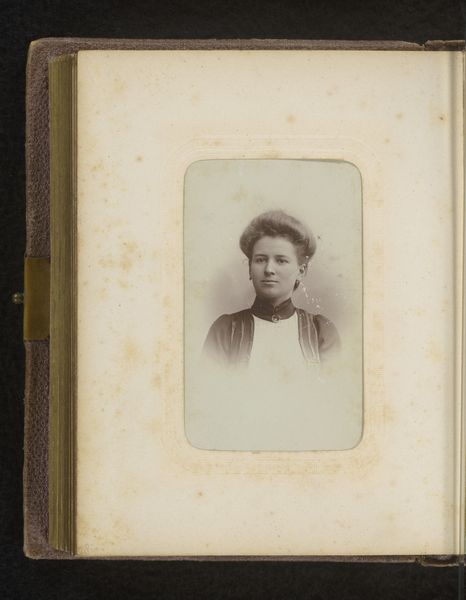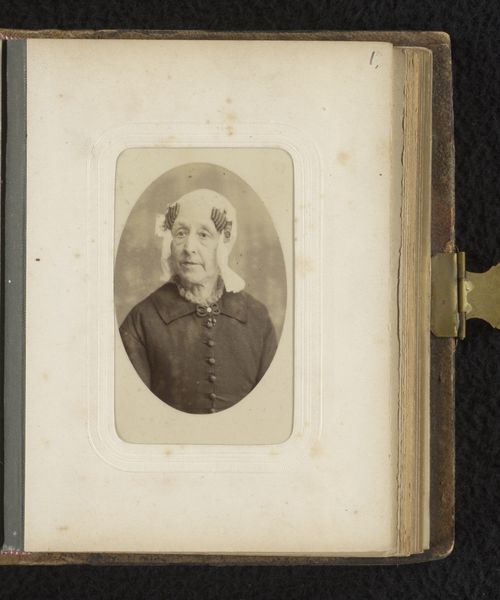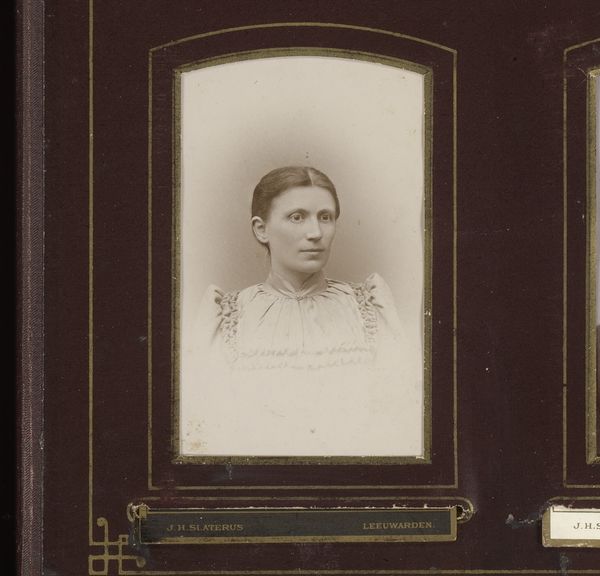
photography, albumen-print
#
portrait
#
photography
#
albumen-print
Dimensions: height 84 mm, width 51 mm
Copyright: Rijks Museum: Open Domain
Editor: Here we have a photographic portrait of Cornelia Maria Bon, likely taken between 1898 and 1905, crafted using an albumen print. There's a certain formality to the composition that speaks to a particular social era. What do you make of it? Curator: The immediate context that leaps out at me is the albumen print itself. This photographic process was incredibly popular for creating detailed portraiture throughout the late 19th century. Its popularity coincided with a period of significant societal shift in the perception and function of photography, especially portraiture. Given this shift, what can we infer from the subject's deliberate presentation? Editor: That's a fascinating point. Cornelia is neatly presented. The elaborate ruffled sleeves and high neckline, the neat updo-- it's all so proper and composed. Does this reflect on the rise of photography as a tool for social representation? Curator: Precisely. In the late 19th century, photographic portraits became more accessible to the middle class, shaping perceptions of social standing. Portraiture became less the domain of painted elites and became instead more attainable for broader societal strata. With that expansion of public access in mind, do you think Cornelia sought to reinforce her standing, or maybe even to challenge societal expectations? Editor: That’s interesting. Perhaps this formal presentation speaks more to upholding societal expectations of women during that time. Maybe even carefully constructing an image of respectability through controlled photographic means. Curator: An intriguing thought! The careful composure certainly reflects that reading. By situating the work within that cultural moment, we begin to perceive that Cornelia isn't just being still for the camera, but performing an ideal of womanhood that the very act of being photographed made possible. Editor: This gives me so much to consider! Seeing beyond just a face but observing the historical narrative makes viewing art a lot more interesting. Curator: Indeed. Historical context adds richness to our appreciation and moves us beyond aesthetic judgments toward meaningful engagement.
Comments
No comments
Be the first to comment and join the conversation on the ultimate creative platform.
